[Photo Essay] Rome: A City of Time Travel and Cultural Contrasts
Day 1: First Steps in the Eternal City
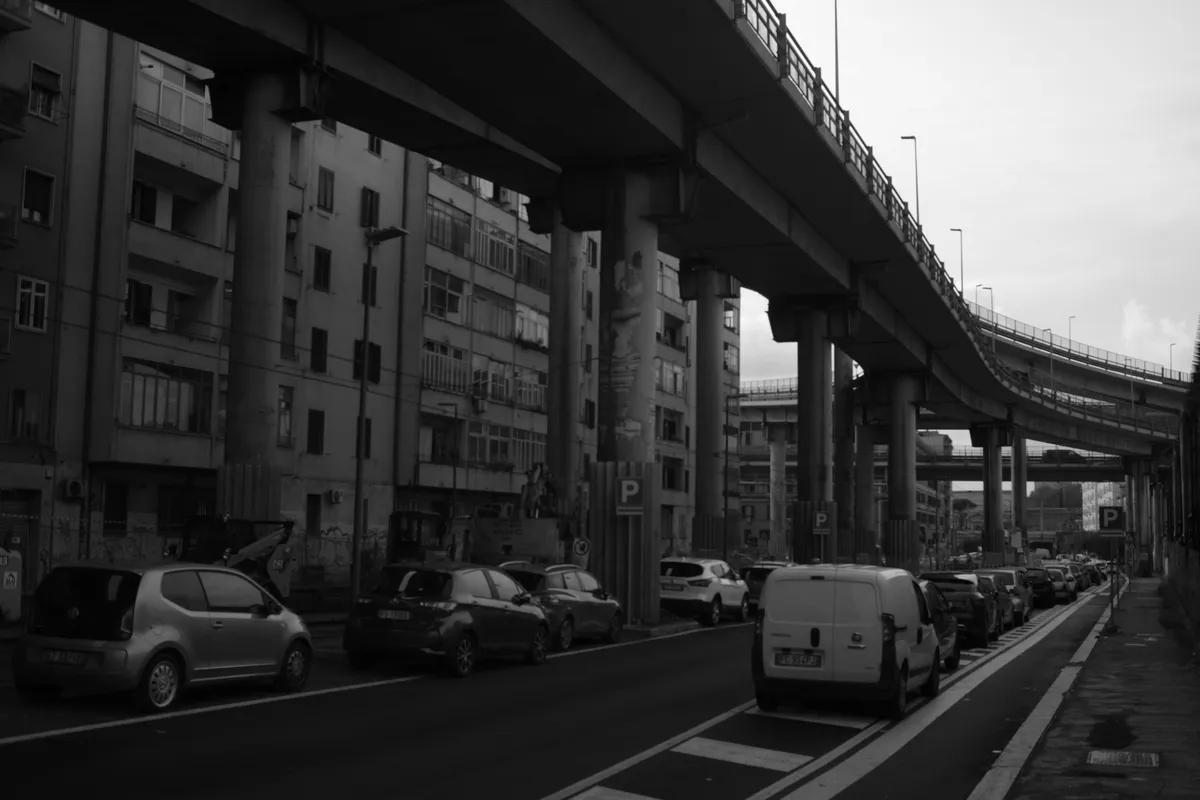
My Roman adventure began six hours before Nikhil's arrival, landing at Fiumicino airport where I faced my first challenge: finding the €8 train to Rome's center. The station's layout was pure chaos - a maze of confused tourists and rapid-fire Italian announcements echoing off the walls.
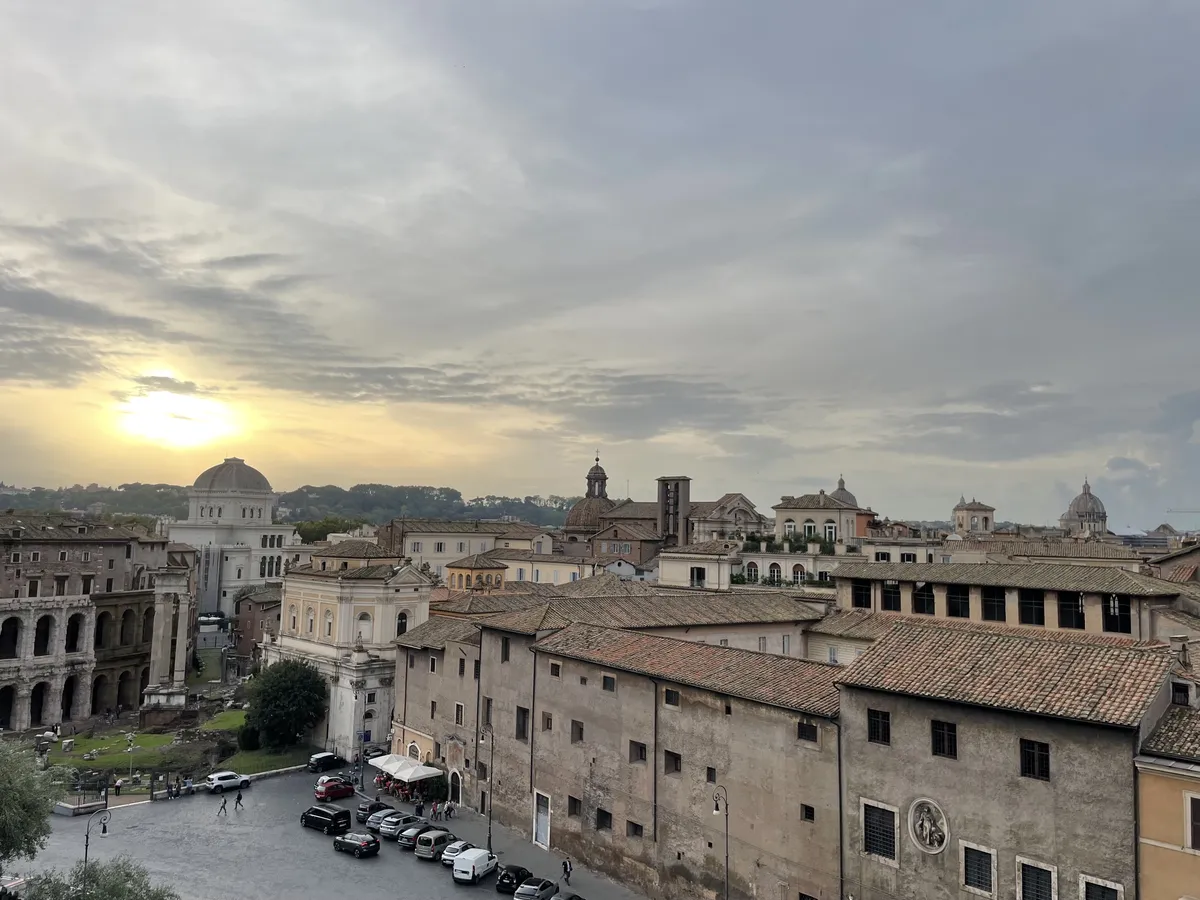
After settling into our hotel near Tiburtina, hunger and closed shops led me to a local supermarket for a late lunch. The pizzas I found there became an unexpectedly perfect introduction to Roman cuisine - simple yet satisfying, with perfectly crisp bases and generous toppings.
Then came my ambitious decision: a 7km walk to the Colosseum. What I'd imagined as romantic European streets turned into something remarkably familiar - I found myself dodging water-filled potholes, scattered trash, and broken glass. The scene reminded me so much of Old Delhi that I had to remind myself I was in Rome.
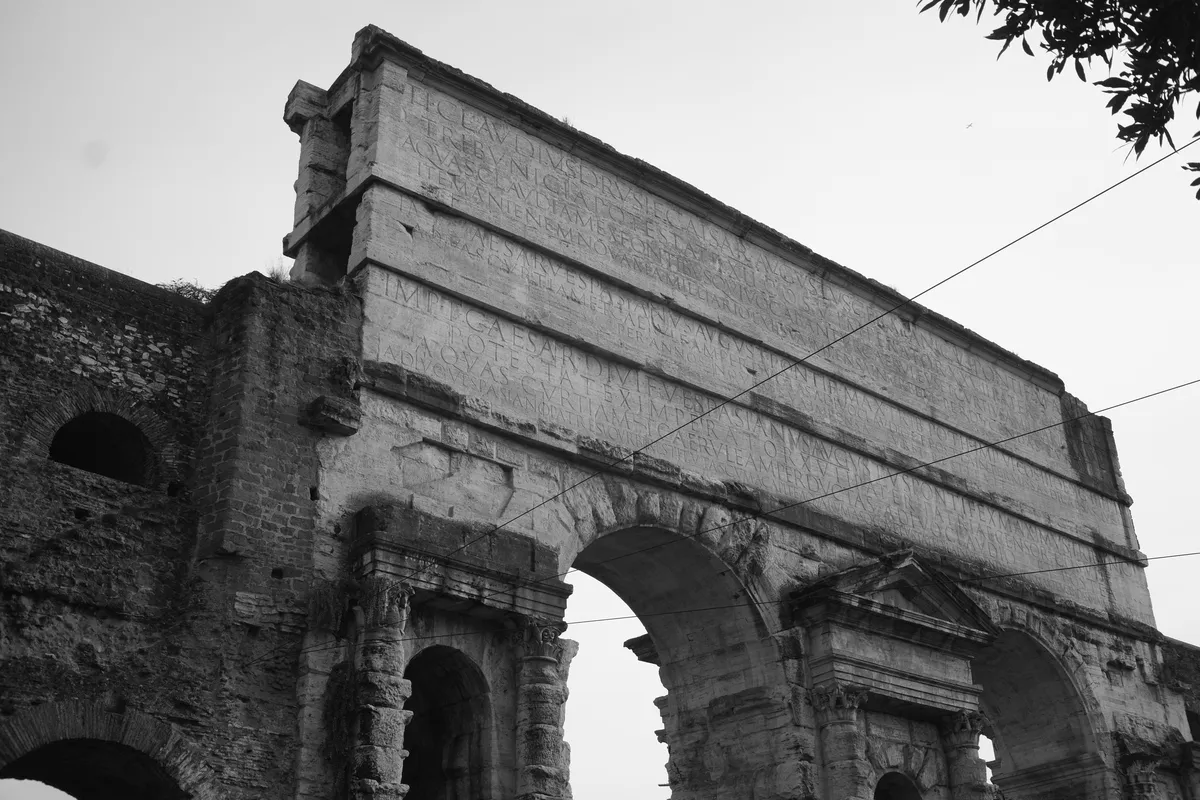
Along the way, I discovered a 5th-century gate standing beside a modern flyover under construction. It was a perfect snapshot of Rome's layered history, ancient stone alongside contemporary concrete. At the tourist office nearby, I picked up a paper map that would become my constant companion through the city's winding streets.
The cultural landscape shifted with each neighborhood I crossed. In one area, I could have sworn I was back in New Delhi's Kashmiri Gate - groups of men gathered for afternoon card games, the familiar rhythm of chai-sipping conversations, faces from the subcontinent that made me pause. This wasn't just imagination: Italy hosts the fifth largest Indian population outside India, with over a fifth of them calling Rome home.
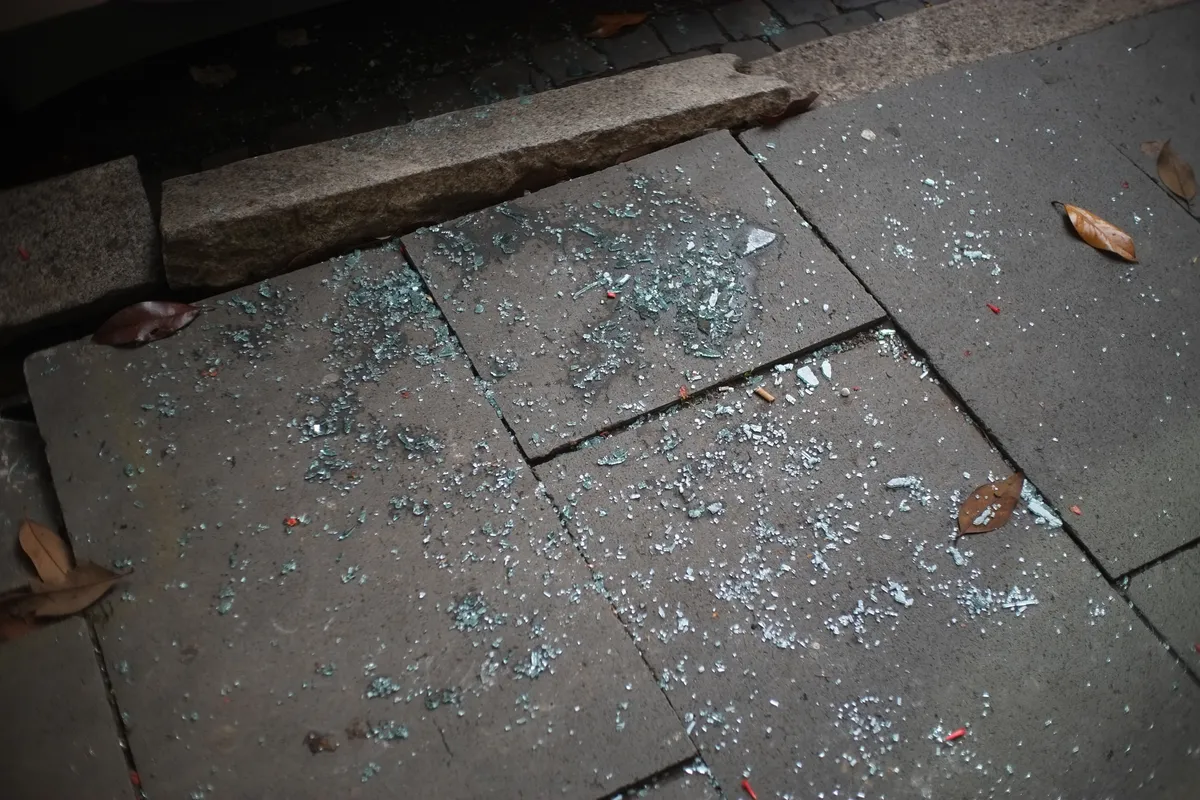
A few streets later, the scene transformed completely. I found myself in what tourists expect of Rome - cameras and guidebooks replaced card games, and the ancient Roman baths rose up before me, majestic and huge. Modern children played in rain-soaked puddles wearing colorful rubber boots, while their parents snapped photos of the ruins - past and present sharing the same space.
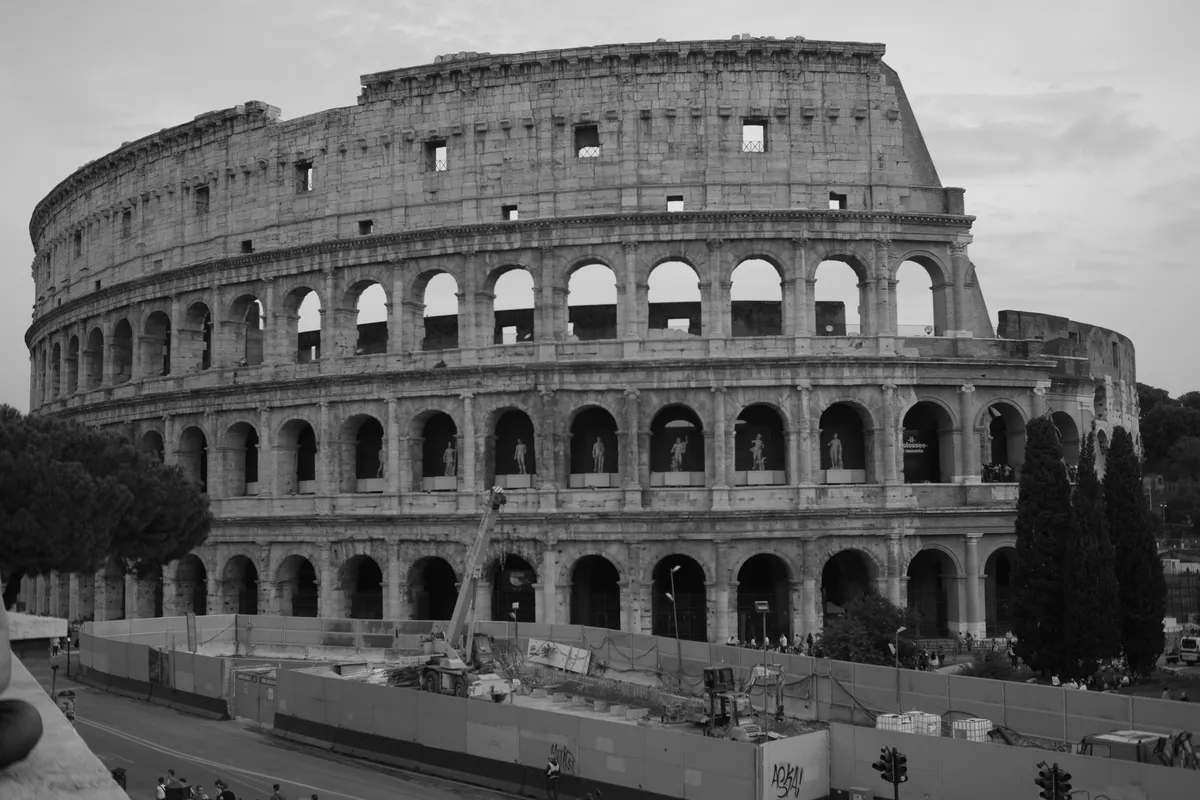
Day 2: EUR and Ancient Rome
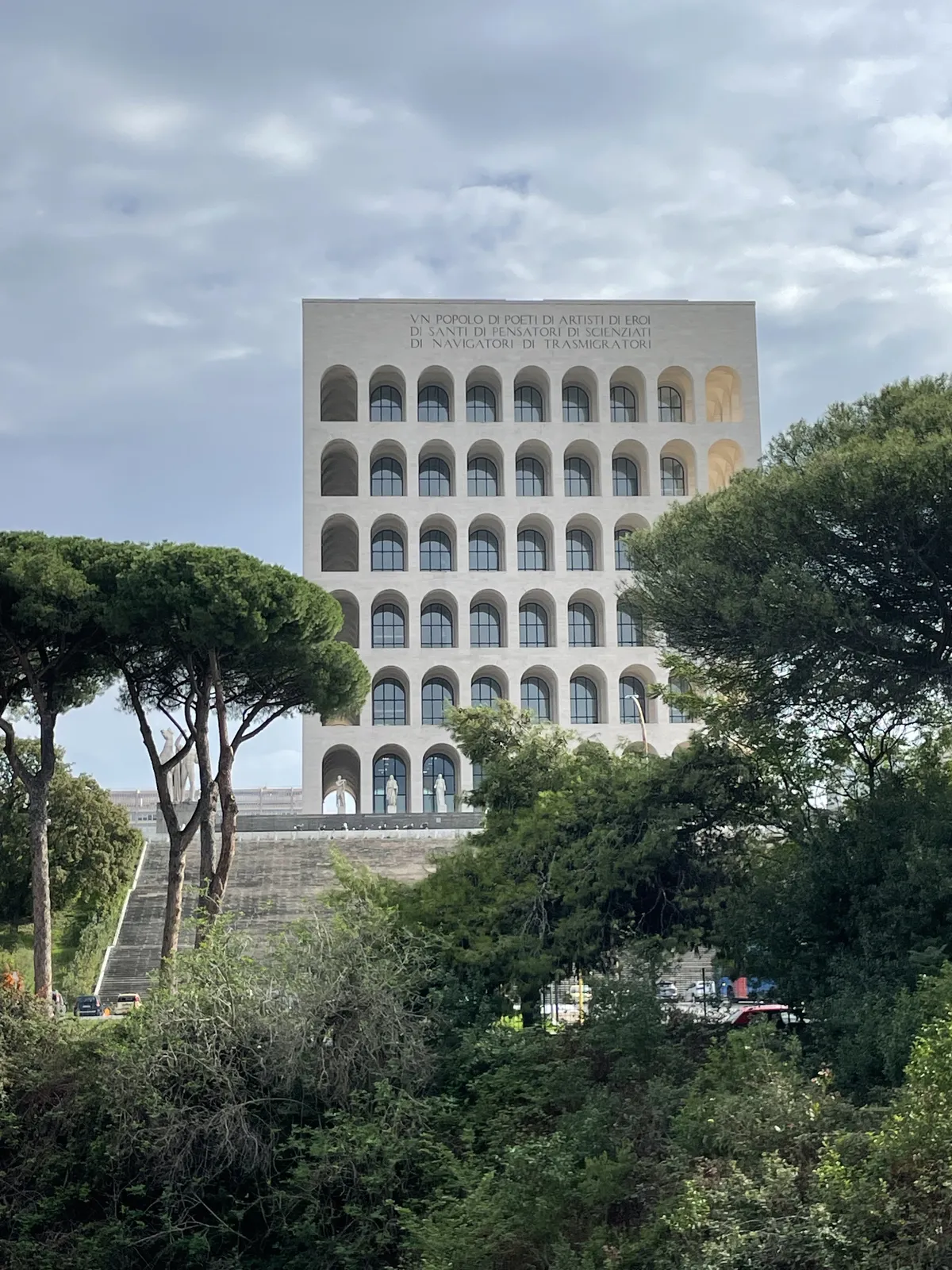
The morning train from Tiburtina carried us to EUR, where wide, empty boulevards replaced Rome's usual tangle of narrow streets. The Square Colosseum rose before us, its geometric arches stark against the sky - no longer a monument to Mussolini's vision but now home to Fendi's luxury brand. Outside a nearby cathedral, models posed against ancient stones while photographers worked.
EUR felt like a different city entirely. The streets, though lined with stores, were eerily quiet. A black, modernist PostaItalia building loomed over an artificial lake where green algae bloomed in patterns identical to the ones I remembered from Chandigarh's water bodies. The similarity was so striking it made me pause.
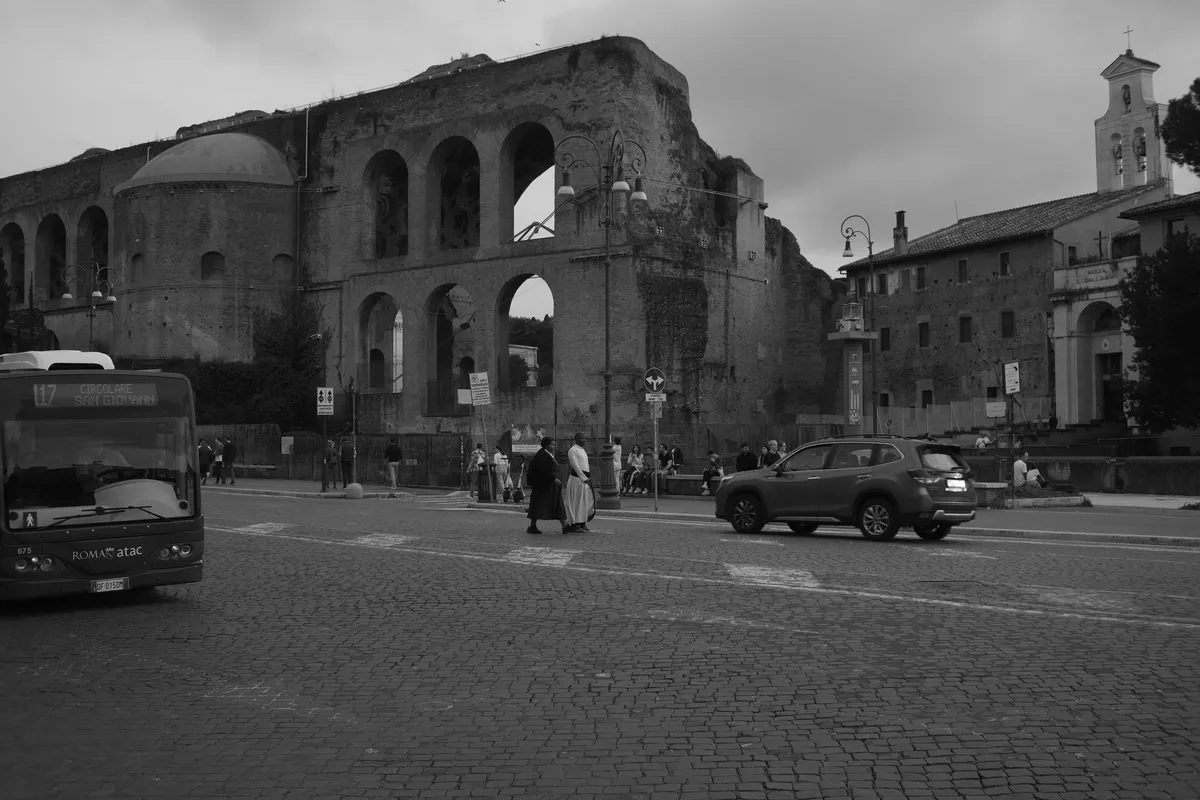
Hunger drew us back to the Colosseum area. We passed by a restaurant Nick's friend had recommended, but the sight of tourists packed shoulder-to-shoulder and menu prices clearly aimed at visitors made us seek alternatives. Es's recommendation led us to a small pasta place where we found perfectly cooked pasta, each strand of spaghetti alla carbonara coated in silky sauce. Only the forgotten tiramisu marred an otherwise perfect meal.
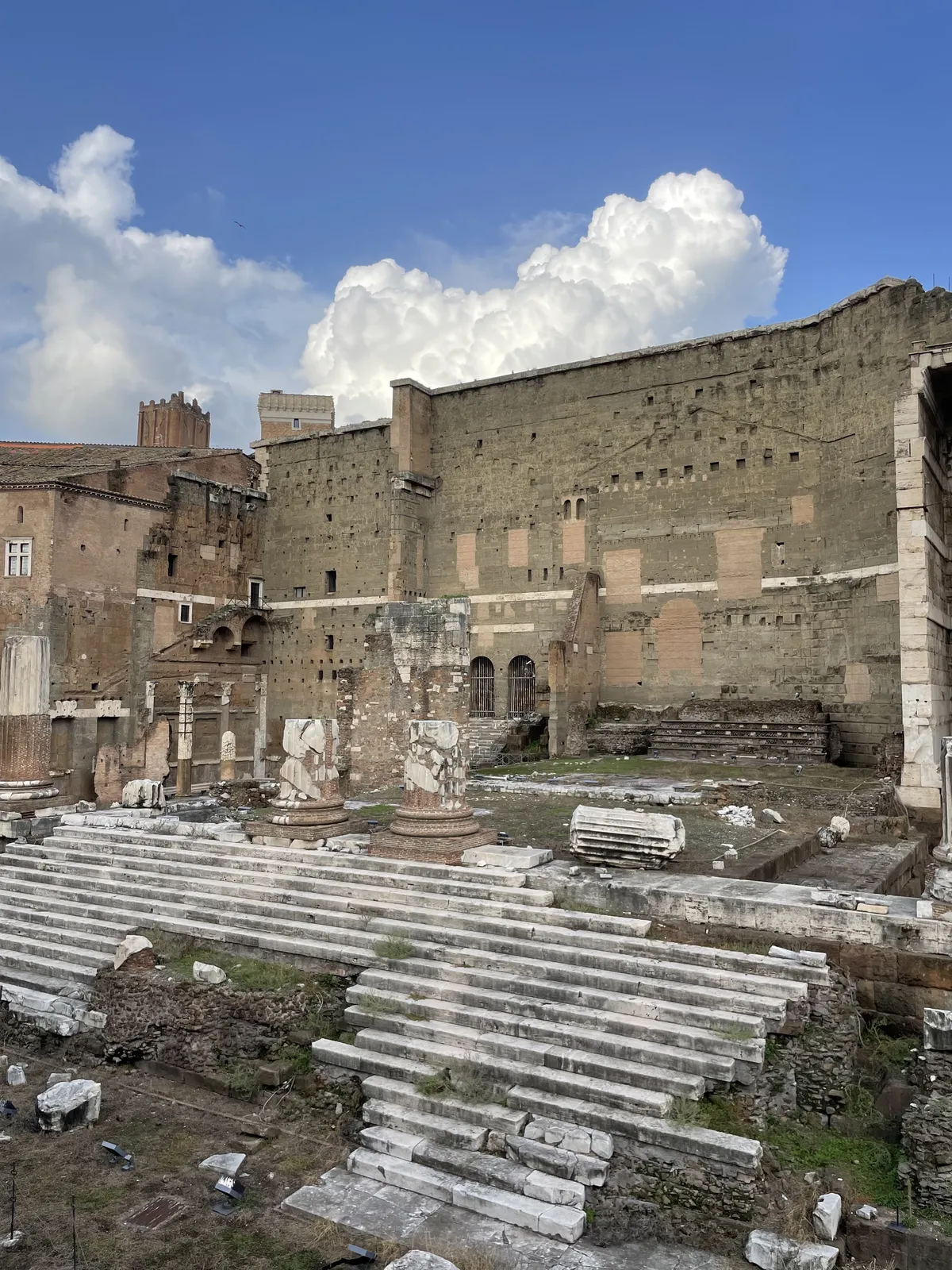
The gelato that followed was mediocre, served by someone who seemed thoroughly tired of tourists. At a café, we discovered ginseng coffee, served with the bill in typical Roman fashion. The Trevi Fountain was under renovation, but the Spanish Steps at sunset offered compensation - crowds of tourists sitting on the worn marble steps while a Guardia Civil officer stood near the Spanish embassy.
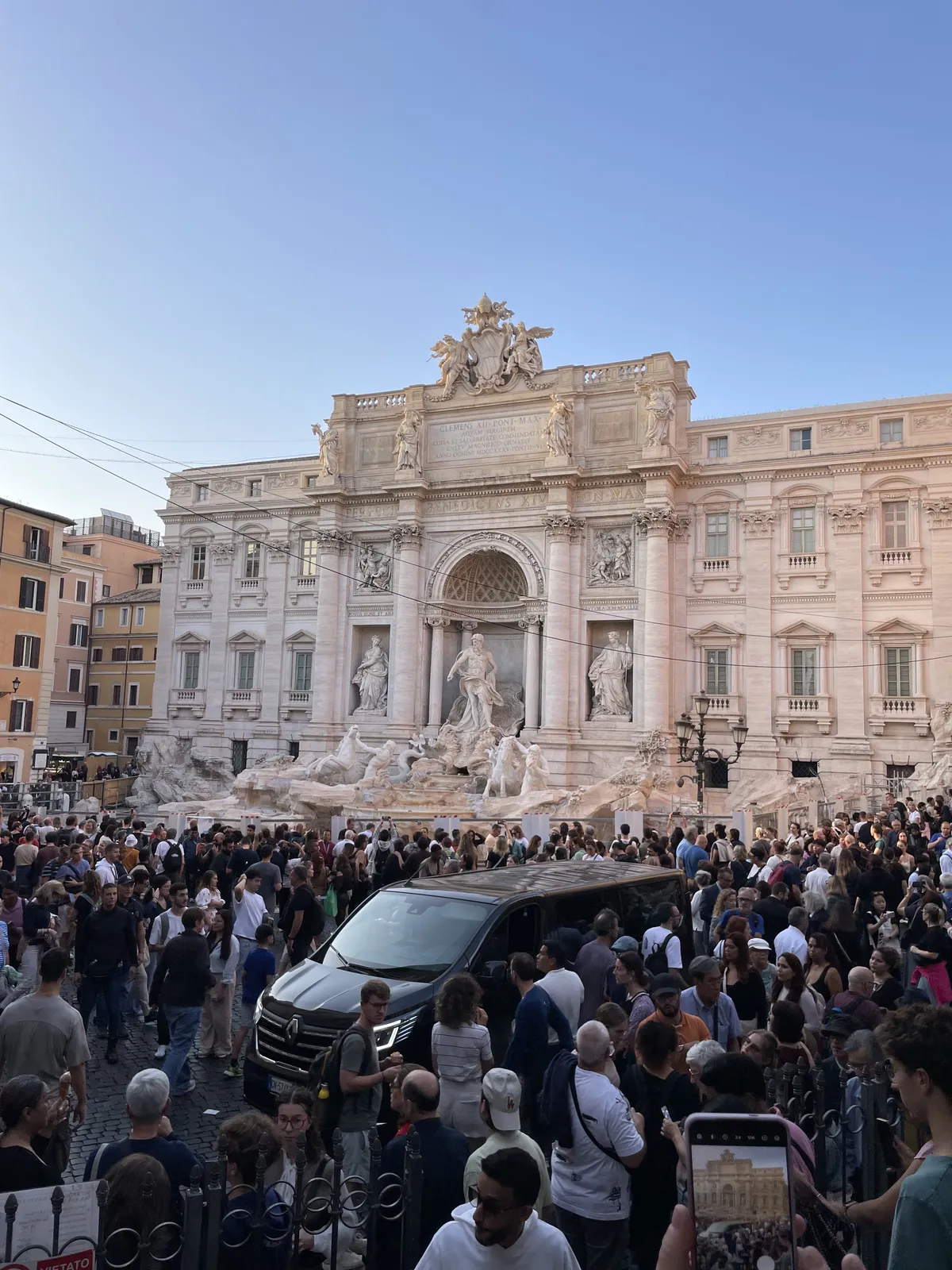
Our dinner began with a disappointingly bland veggie piadina, but subsequent street pizzas and arancini made up for it. Near our hotel, a bustling kebab store satisfied our final craving of the day. The evening's last surprise was finding a hidden concert venue where a local band played - a perfect end to a day of contrasts.
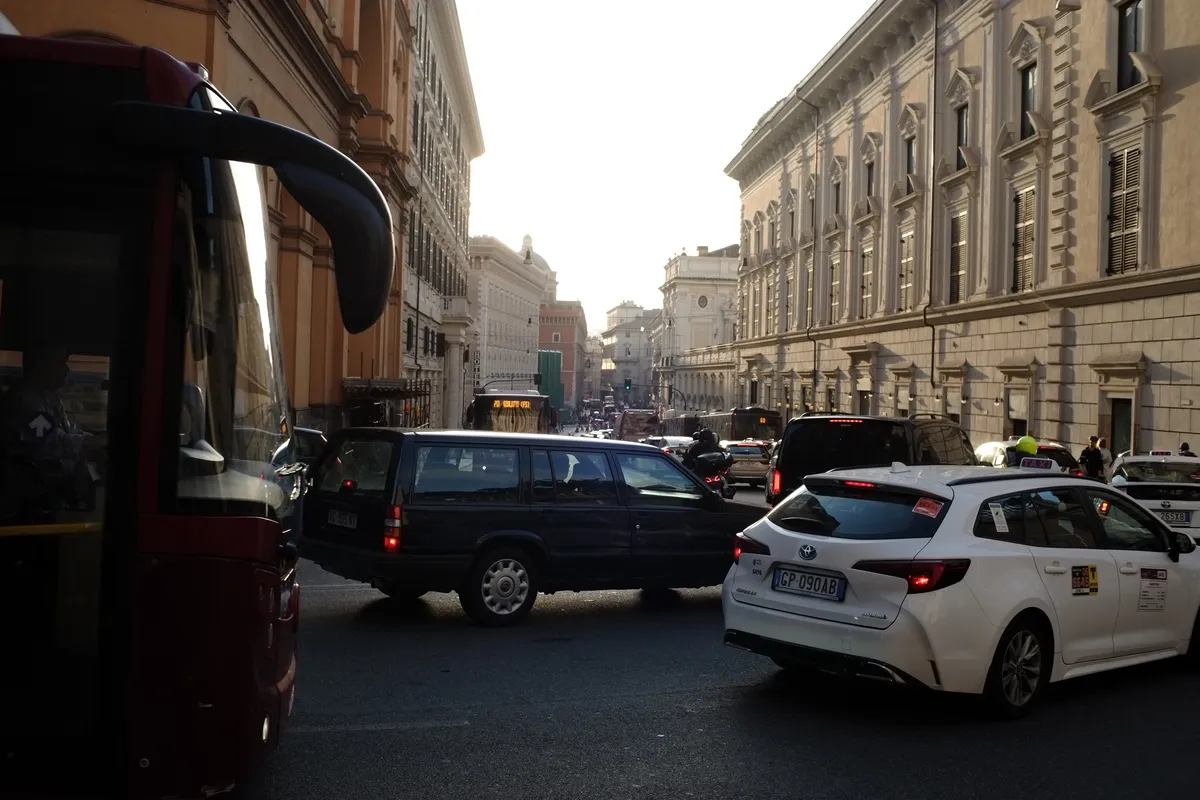
Day 3: MakerFaire and Trastevere
Rahul arrived early at our hotel, and we spent some time catching up before heading to the station. The tourist-trap breakfast prices there were our first surprise of the day. At Pyramid station, we found exactly what the name promised - an actual pyramid rising incongruously among modern buildings. The surrounding neighborhood felt remarkably like South Delhi, from the street layout to the way people moved through the spaces.
After spending most of the day at MakerFaire, exhaustion and hunger led us to a nearby takeaway spot. The food was exactly what we needed - fresh, flavorful, and abundant. I tried my first Chin8 Chinotto, a bitter Italian soft drink I'd read about but never tasted. Its complex flavor, somewhere between cola and medicinal herbs, was oddly refreshing.
Evening found us heading toward the Pantheon, though a wrong metro stop turned our direct route into an unexpected detour from Trevi. The mistake led us to a coffee shop where copper equipment lined the walls and the barista prepared drinks with practiced precision. Their ginseng coffee arrived rich and aromatic, somehow different from the ones we'd tried before.
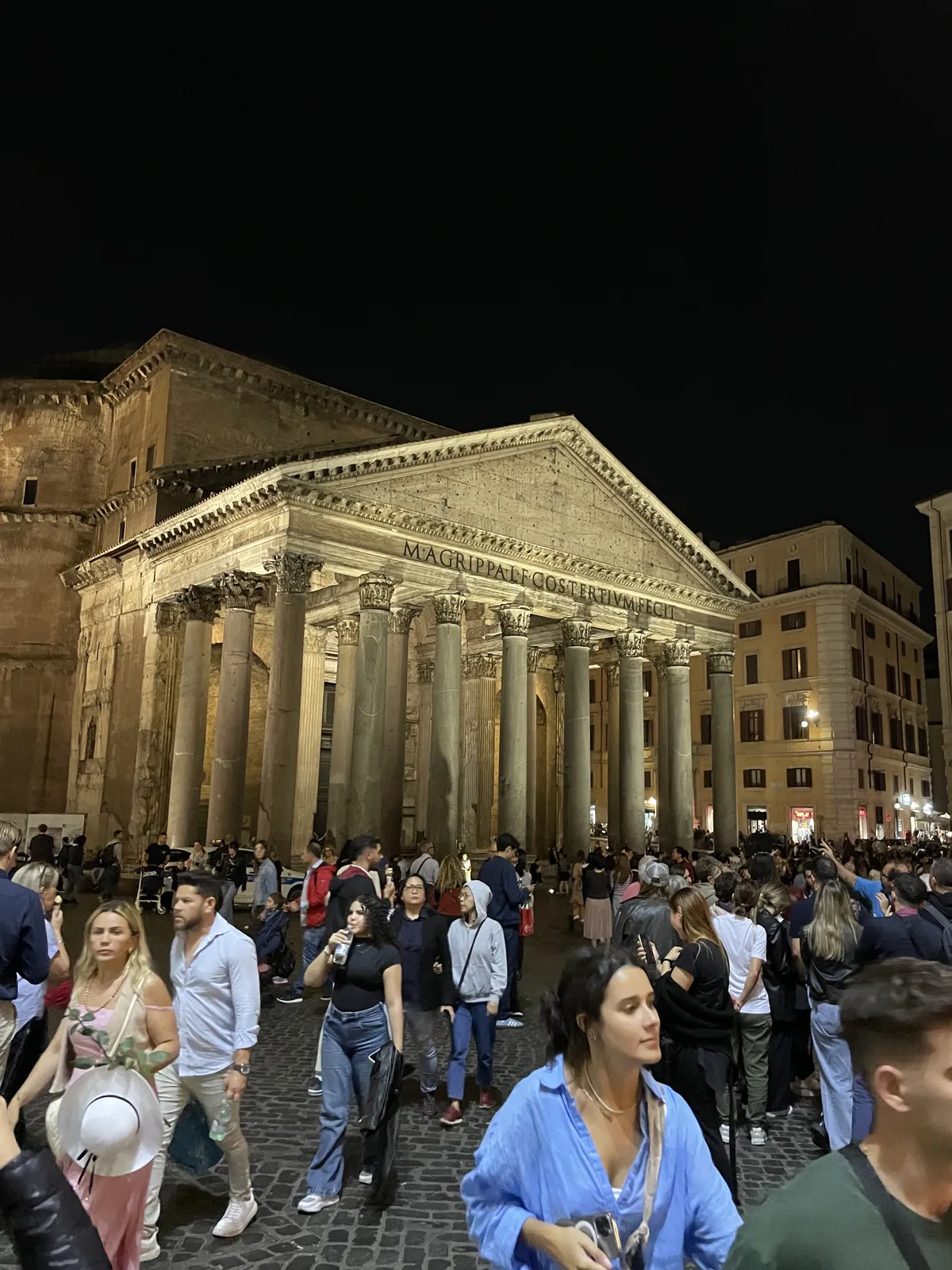
The Pantheon's exterior was magnificent in the evening light, but being closed, we could only admire it from outside. Crossing the river into Trastevere, we paused on the bridge, drawn by a street musician whose voice carried over the water. An elderly woman nearby was so moved she began to dance, tears in her eyes.
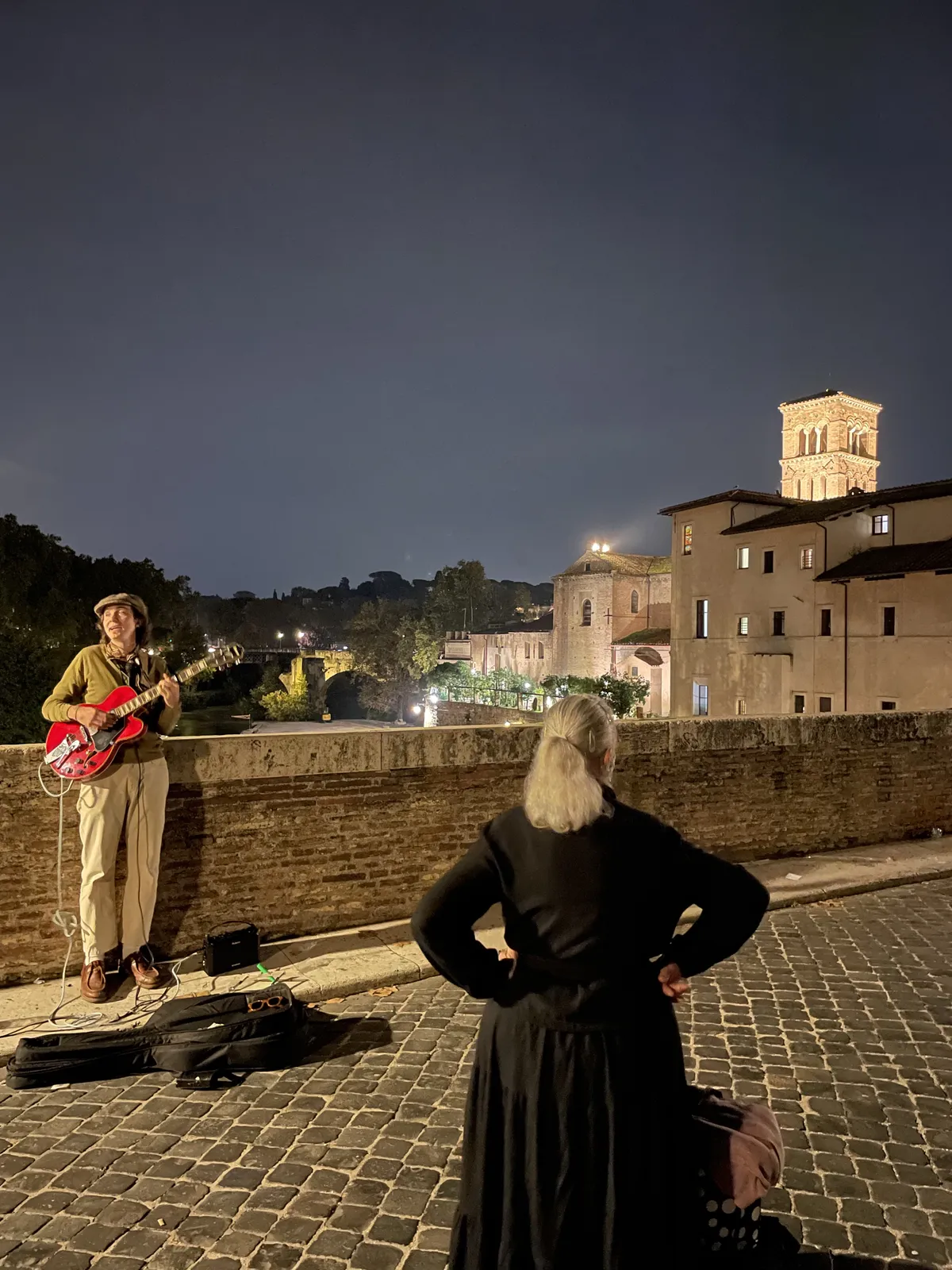
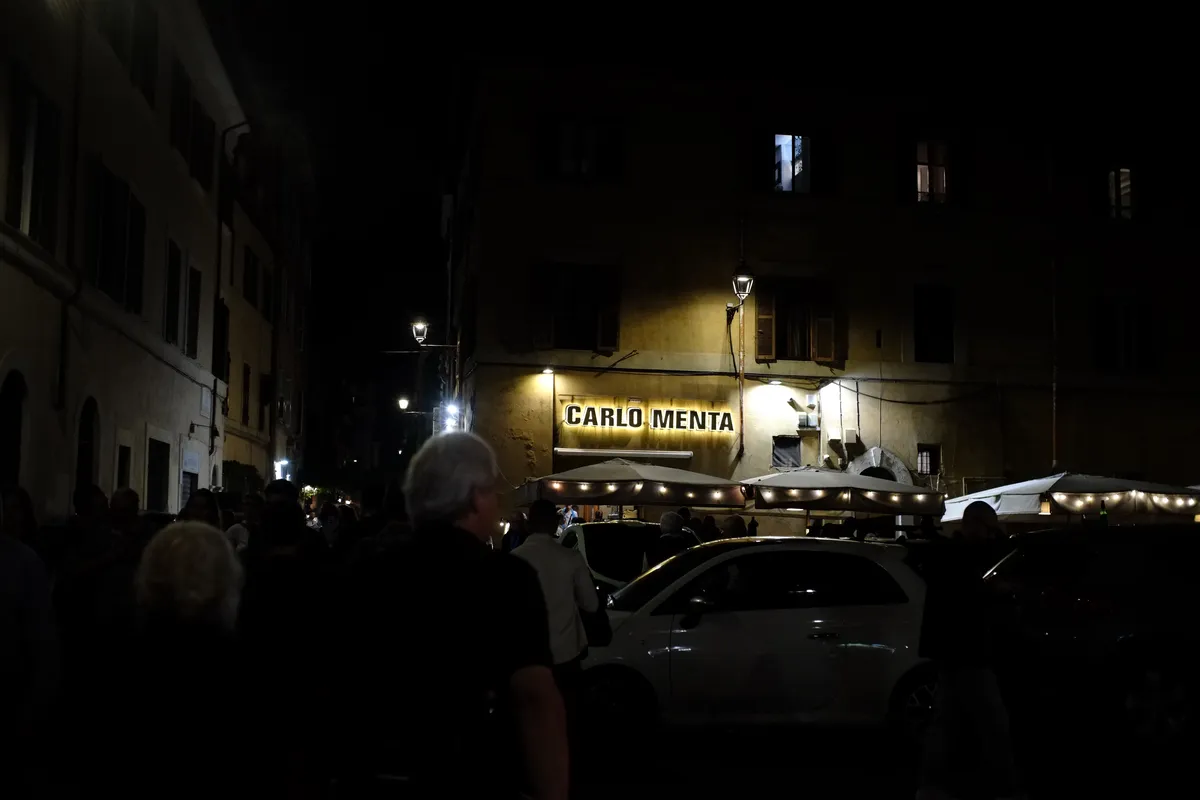
Trastevere's streets were alive with evening energy. We made our way to CaveCanem, recommended by Esthela, where the 20-minute wait for a table stretched into a lesson in Roman dining culture. The restaurant was packed, conversations in multiple languages filling the air. When our food finally arrived - 40 minutes late - the stuffed potatoes were crispy outside and cloud-soft within, the pizza's crust blackened just right at the edges, and the pasta perfectly al dente.
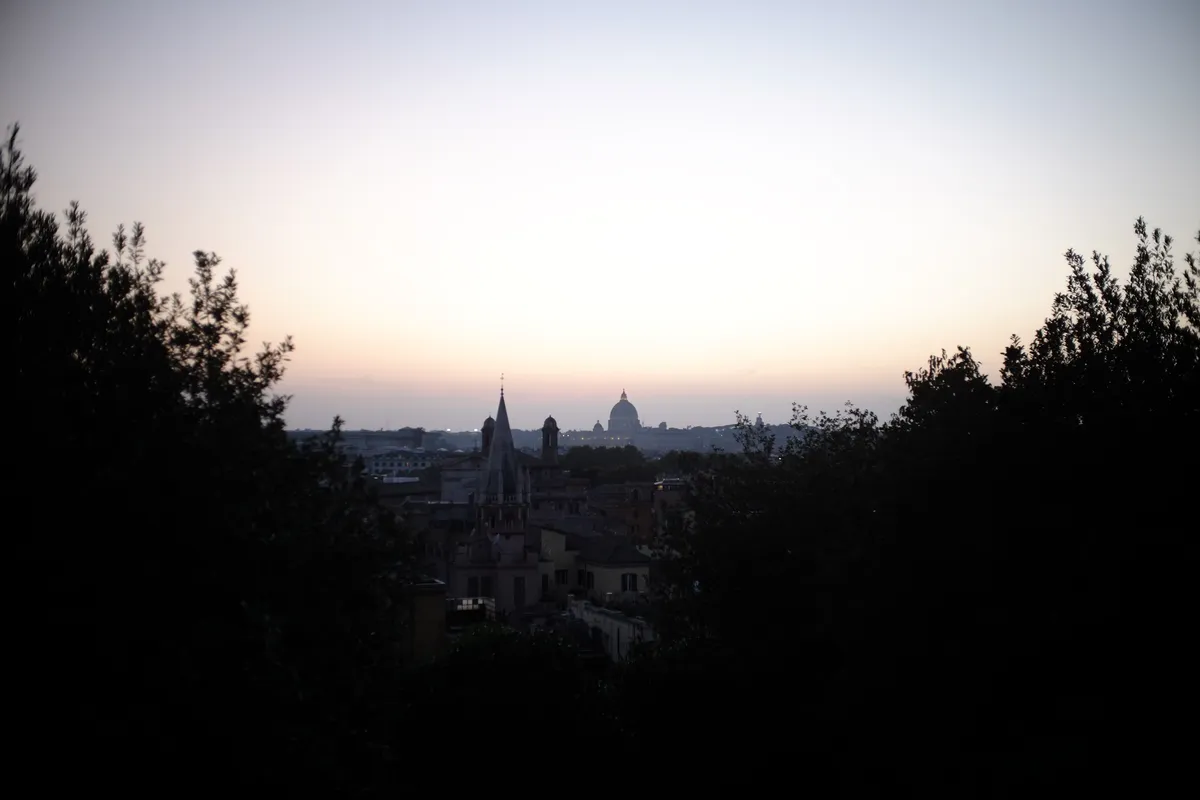
The night's peaceful mood shifted on our way back. We missed our bus - it left three minutes early - and on the next one, encountered a drunk passenger who began hurling racial slurs at us. At Termini station, we noticed a group of Indian girls on the bus, and there was that familiar moment of mutual recognition and deliberate indifference - a strange dance of diaspora dynamics I'd seen play out in other cities.
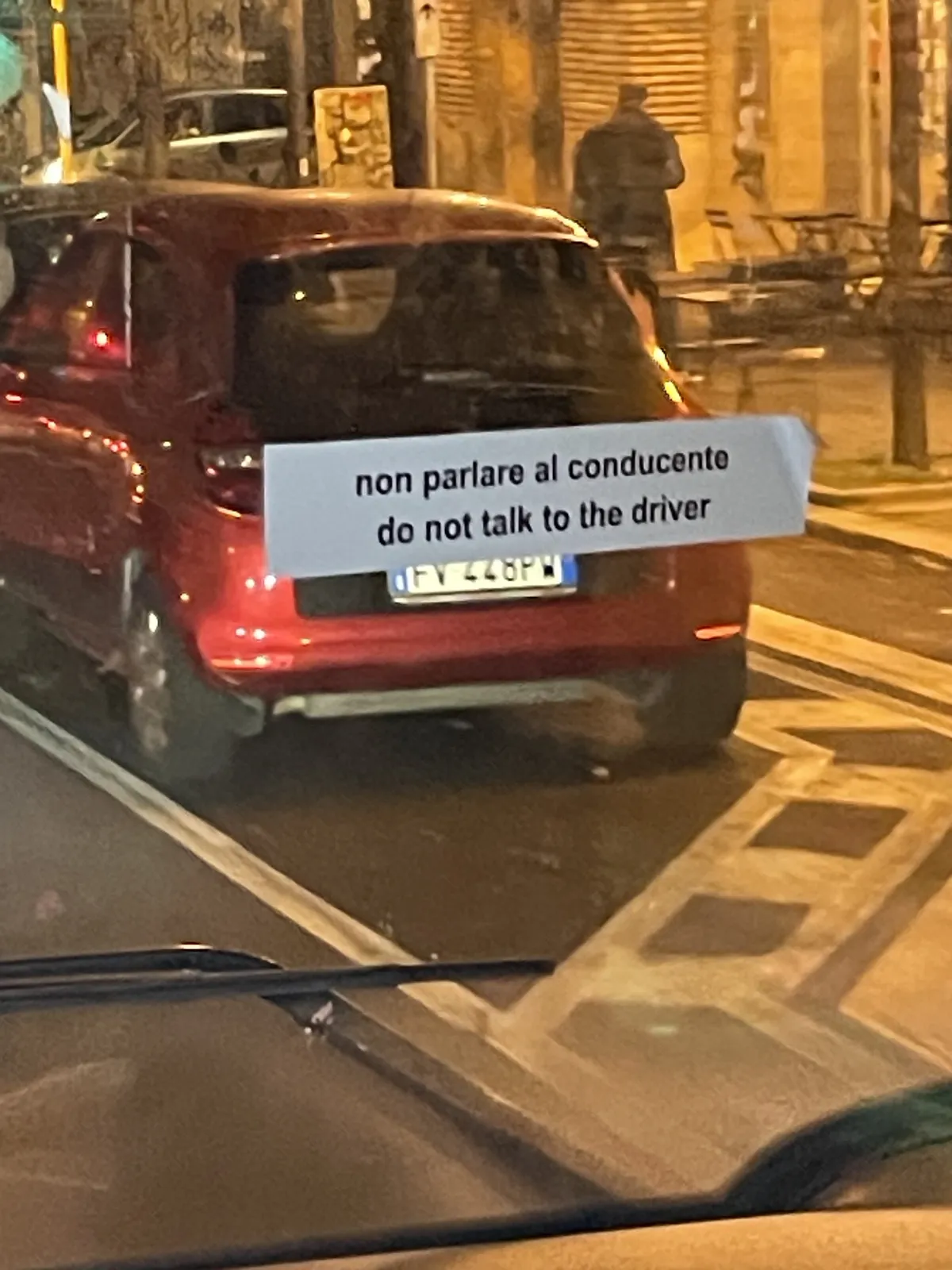
Day 4: Vatican Adventures and Roman Wanderings
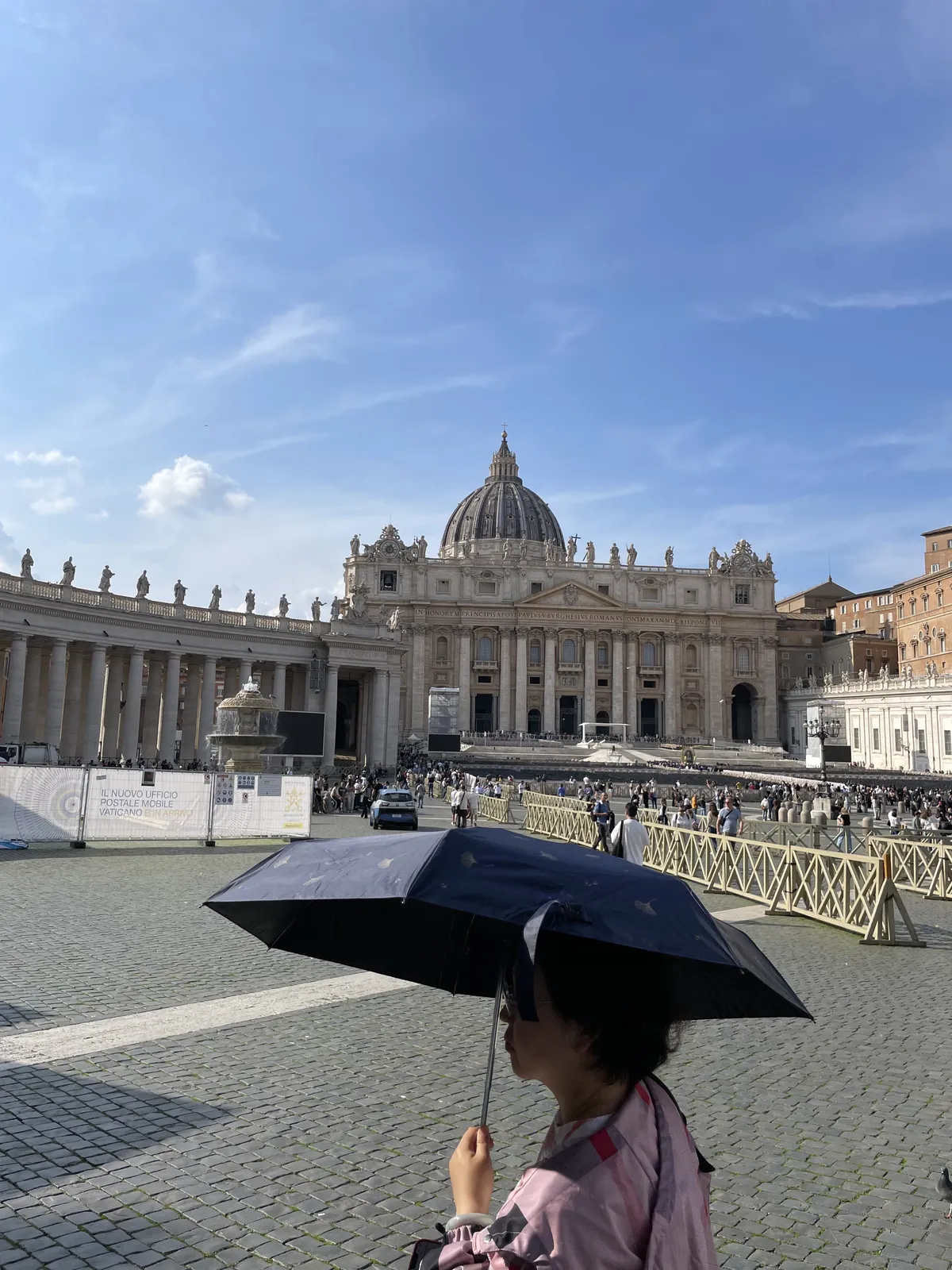
The morning began at a local supermarket where I found myself studying the shelves like an anthropologist. Among the usual items sat bottles of water specifically marketed for constipation relief - a telling detail about the local bread-heavy diet. Our Vatican plans started with high hopes of seeing the Pope, but timing wasn't on our side.
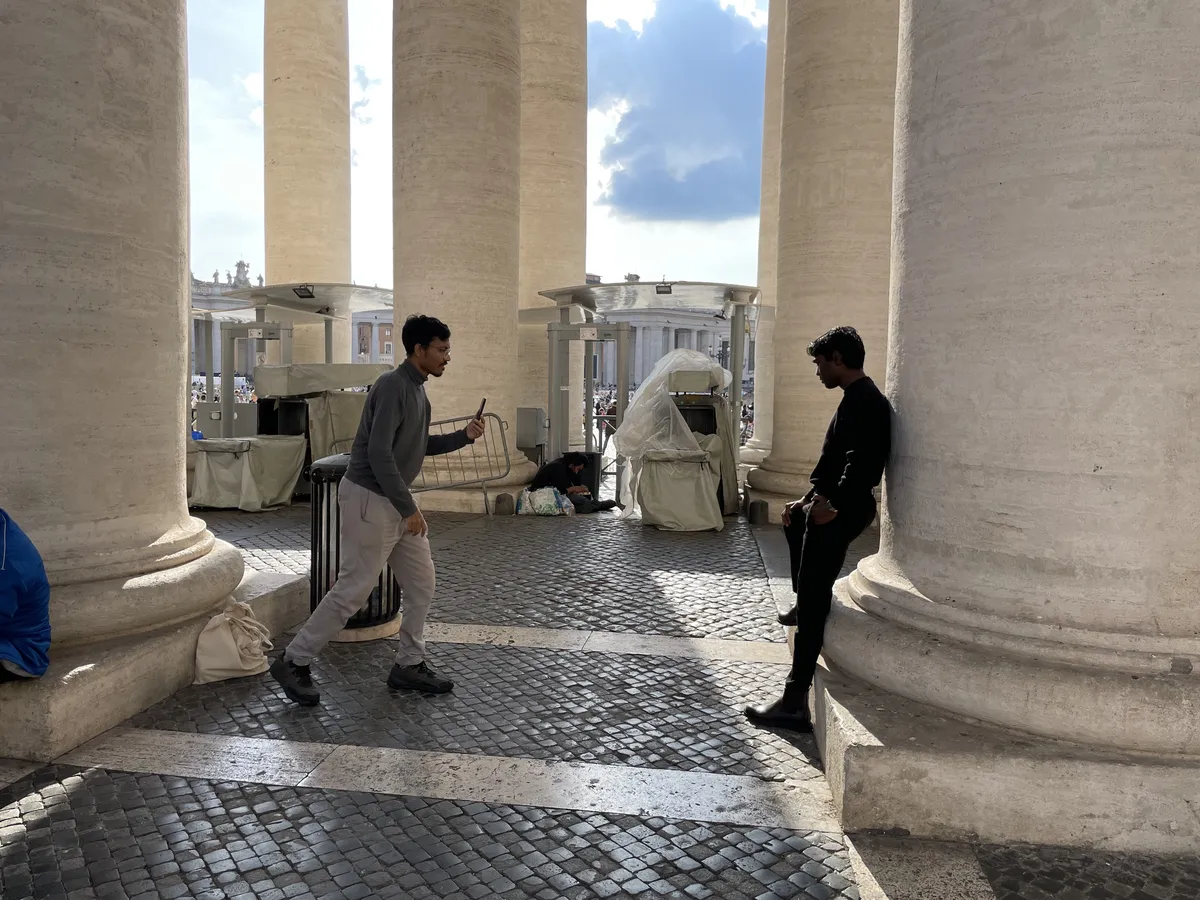
The metro ride to St. Peter's Square brought its own drama. At Termini, while changing trains, a fellow passenger pushed my friend out just as the doors were closing, looking quite pleased with his mischief. We reunited one station later, but by then we'd missed our window for the papal audience.
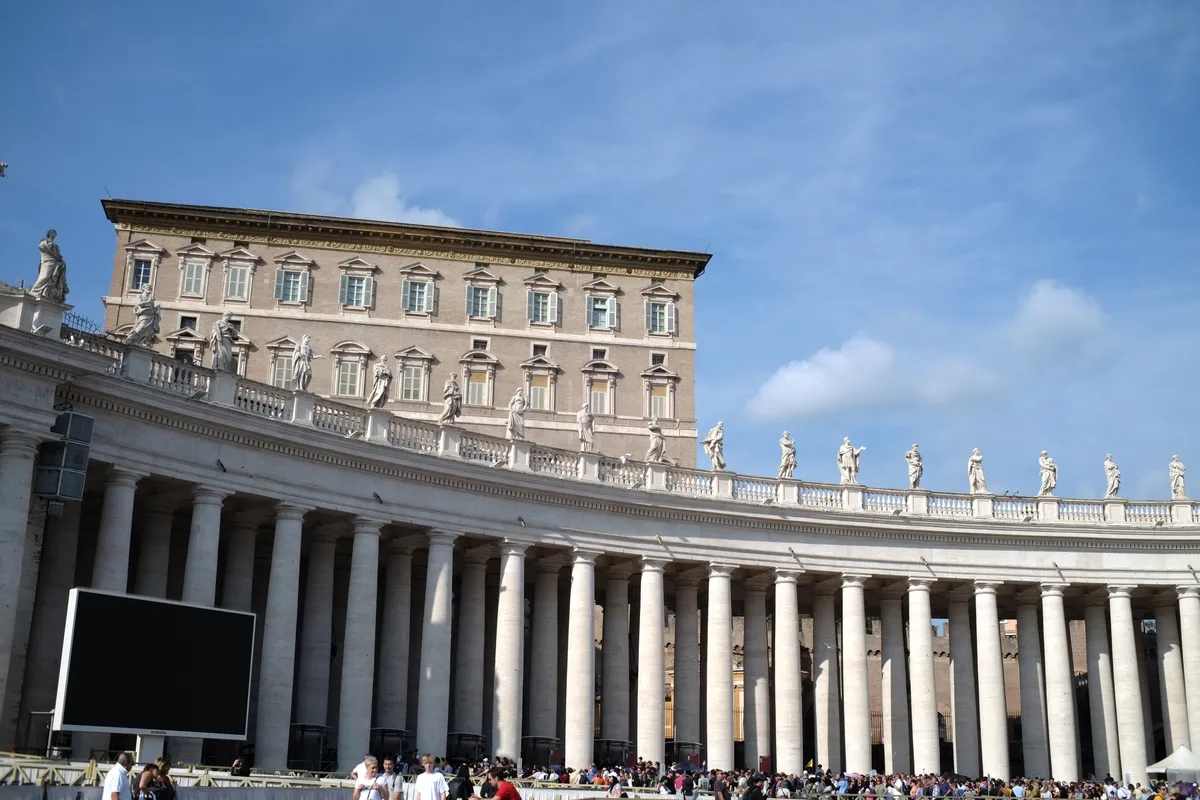
At the Vatican, the Swiss Guards stood in their distinctive uniforms while we chatted with priests from Kochi, India, who warned us about the long wait ahead. We spent twenty minutes in the sun, watching an interesting parade of humanity - British tourists debating dress codes, families orchestrating photo sessions, and fellow visitors sharing travel stories over snacks.
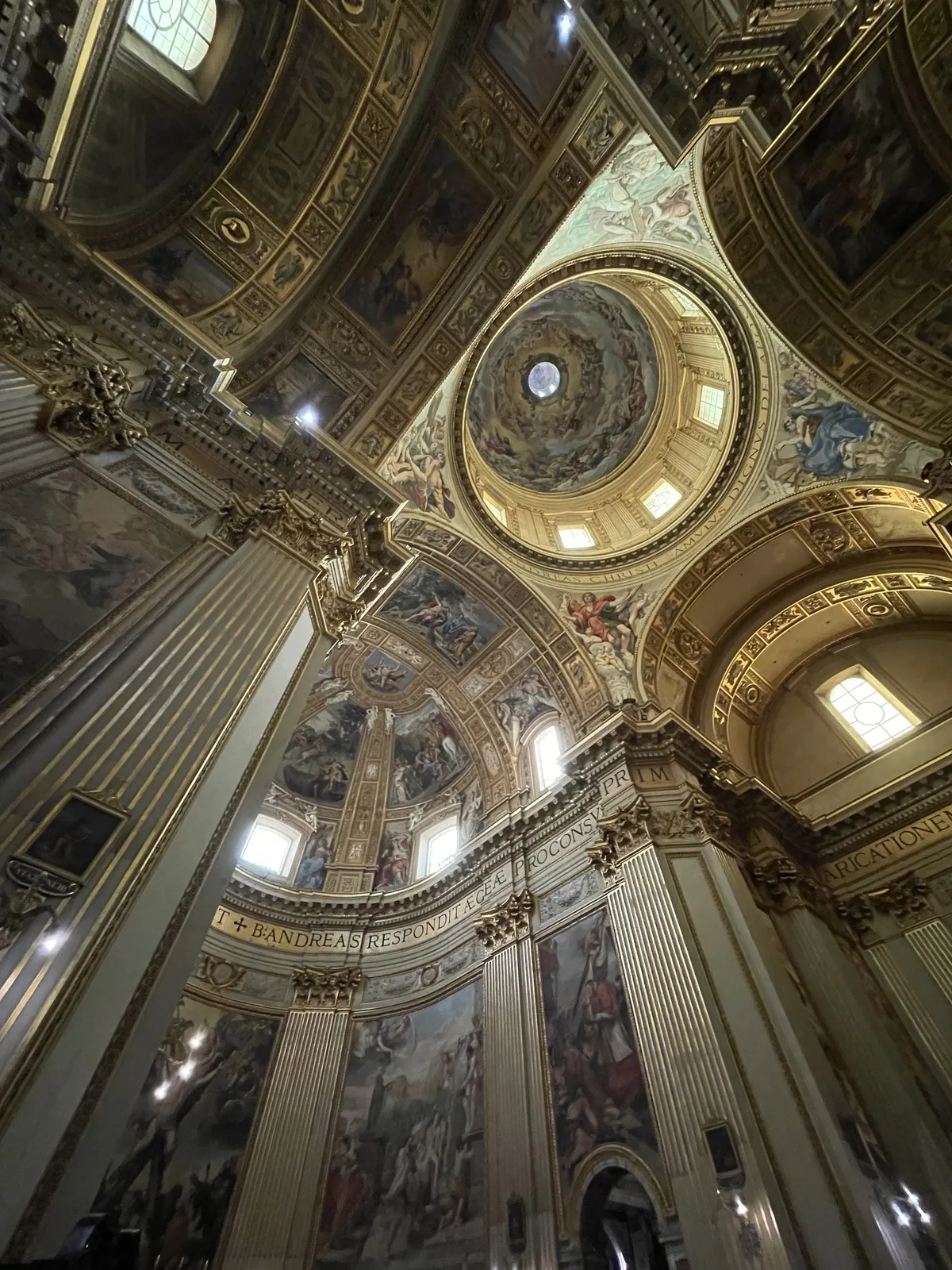
The entrance queue presented an unexpected challenge: what to do with our steel water bottles. After watching someone steal expensive flasks supposedly secured to the rails, we had to get creative with hiding our bottles. I passed time chatting with some Argentinians in lunfardo, watching an Indian family perfecting their social media shots, and even managed to sneak in a quick nap on Vatican grounds.
Lunch led us to BFC (Bangla Fried Chicken), following rumors of good biryani. The reality was mediocre, with a curious interpretation of raita - mayonnaise spiced with oregano. We continued our walk past Castel Sant'Angelo, adding it to our mental list for future visits. At Piazza Navona, we found the Neptune Fountain under renovation, but discovered a lively flea art festival nearby.
The Basilica of Sant'Andrea della Valle offered a moment of peace, its soaring dome and quiet corners providing relief from the bustling streets. A chance discovery from a postcard led us to Arco degli Acetari, a hidden courtyard that felt frozen in time.
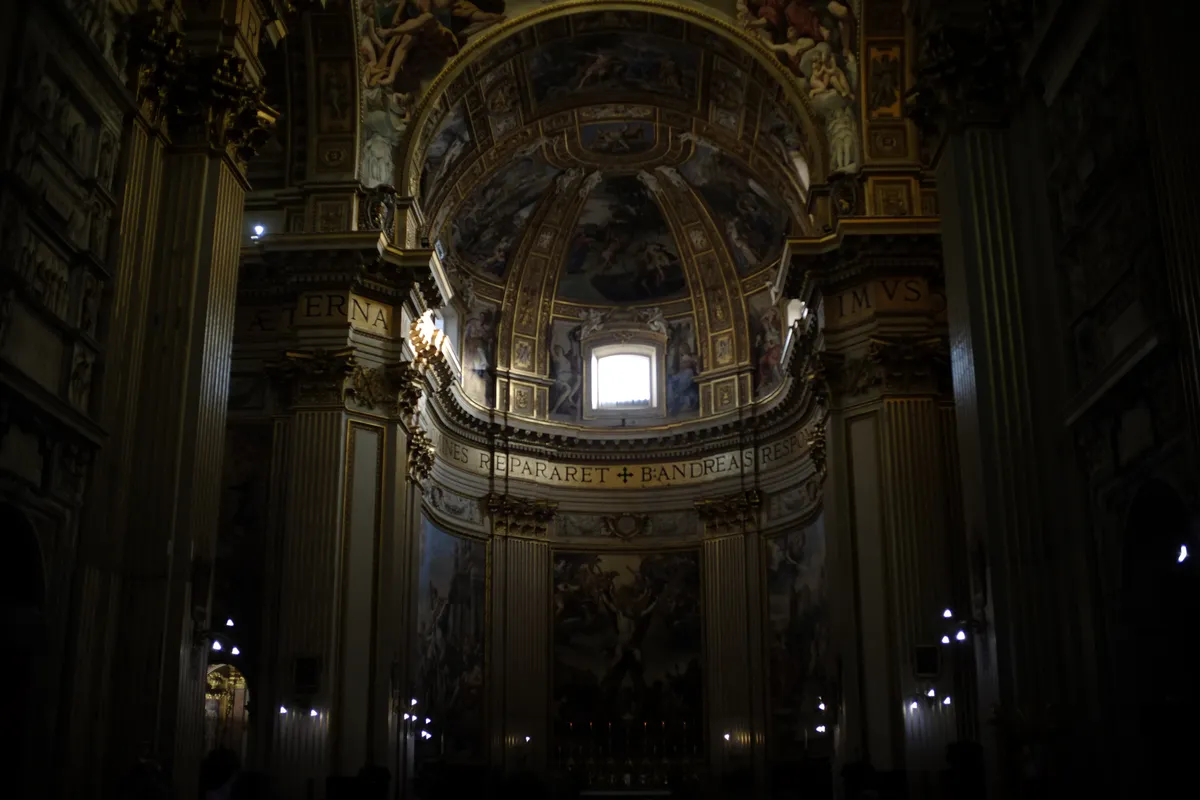
The Pantheon, when we finally entered it, proved worth braving the queues and persistent scam artists outside. Its concrete dome from 600 AD still amazes, though the stern ticket checker seemed unmoved by our enthusiasm. Dinner at a nearby restaurant began promisingly - fresh pasta being made in the window drew us in - but turned into a lesson in Roman dining fees: €2 for sitting, €2 for the tablecloth, €2 for unrequested bread, charges for tap water, and €17 pasta dishes. The food was excellent, but the stack of unexpected charges left a bitter taste.
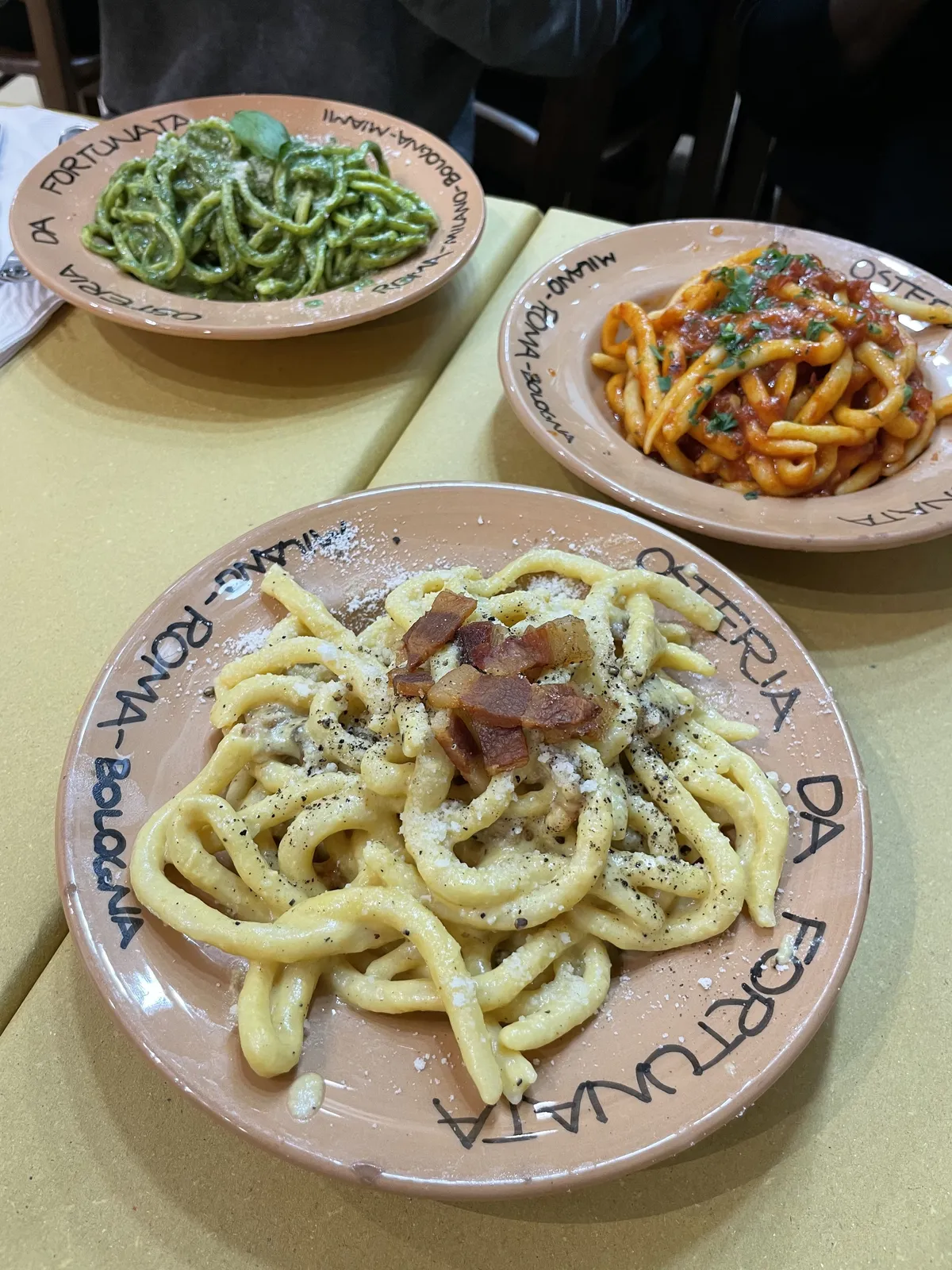
Day 5: Departure Reflections
Our last morning exemplified Rome's unpredictability - a transportation strike complicated Nick's departure plans while my Trenitalia connection ran smoothly. As my flight carried me home, I thought about the map of Rome I'd created, not just of streets and monuments, but of experiences: the contrast between ancient ruins and modern strikes, the growing Indian community amid Italian traditions, the unexpected discoveries in every corner.
Rome revealed itself as a city that defies simple categorization. Each neighborhood holds its own character, each street its own stories. The city absorbs new influences while maintaining its essential Roman nature - a place where past and present coexist in sometimes chaotic but always fascinating ways.
A note for future travelers: Keep water bottles handy (there's a surprising shortage of drinking fountains), watch out for unexpected restaurant charges (from bread to tablecloths), and don't be afraid to get lost - some of Rome's best experiences happen when plans fall apart.